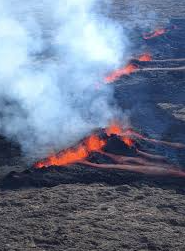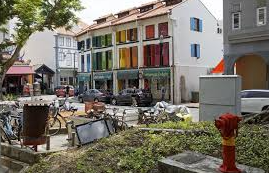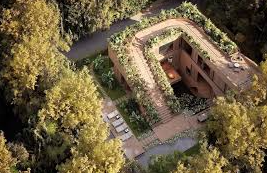New volcanic activity in Iceland prompts the evacuation of Grindavík, with the threat of a larger eruption looming.
The Icelandic town of Grindavík and the famous Blue Lagoon spa have been evacuated following the eruption of a volcano on the Reykjanes Peninsula. This marks the 11th eruption in the region since 2021, signalling the continuation of volcanic activity in this area near Reykjavík.
The eruption was preceded by an “earthquake swarm” at around 6:30am local time, followed by the eruption at 9:45am. Lava began spilling from a fissure near Grindavík, with the orange-red lava flow moving rapidly southwards. By 10:00am, the lava had already reached the protective barriers designed to shield the town, triggering emergency sirens. Authorities estimated the fissure to be approximately 700 metres long by 10:30am.
The eruption has already caused significant disruption. Grindavík, a fishing town about an hour’s drive from Reykjavík, has been largely deserted since November 2023 when the town’s structures were severely damaged by a previous eruption. Although some residents returned after repairs, most people left the area, with many businesses being closed down or relocated. Now, the remaining residents of Grindavík have been evacuated, except for a few who refused to leave.
The Blue Lagoon, a world-renowned tourist destination, was also evacuated. The attraction announced that it had temporarily shut down due to the ongoing volcanic activity, with plans to provide more updates as the situation develops.
Civil protection officials have warned that the eruption may be much larger than the previous ones due to the substantial amount of magma accumulating in the underground tunnel. Emergency responders in the area have reported earthquakes and signs of ground deformation, which could indicate further risks for the town itself.
Despite the immediate danger to the town, authorities from the Icelandic Tourist Board have assured that there is currently no threat to the wider population, and flights from Keflavík airport continue to operate normally. However, the area around the eruption site has been closed to the public, with experts closely monitoring the situation for gas pollution risks and other developments.
The region has seen an uptick in tourism since the 2023 eruption, with visitor numbers rising slightly over the past year, despite earlier concerns about the impact of the volcanic activity on international travel.








